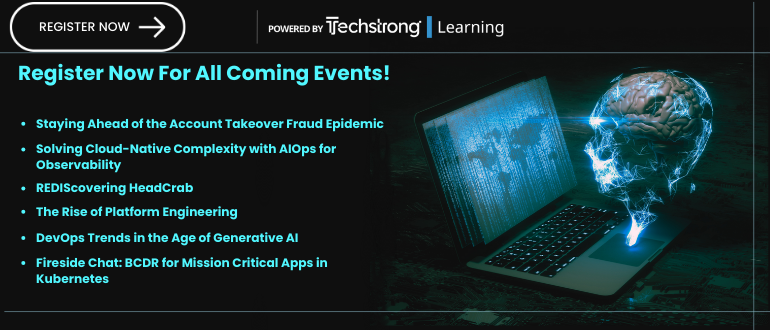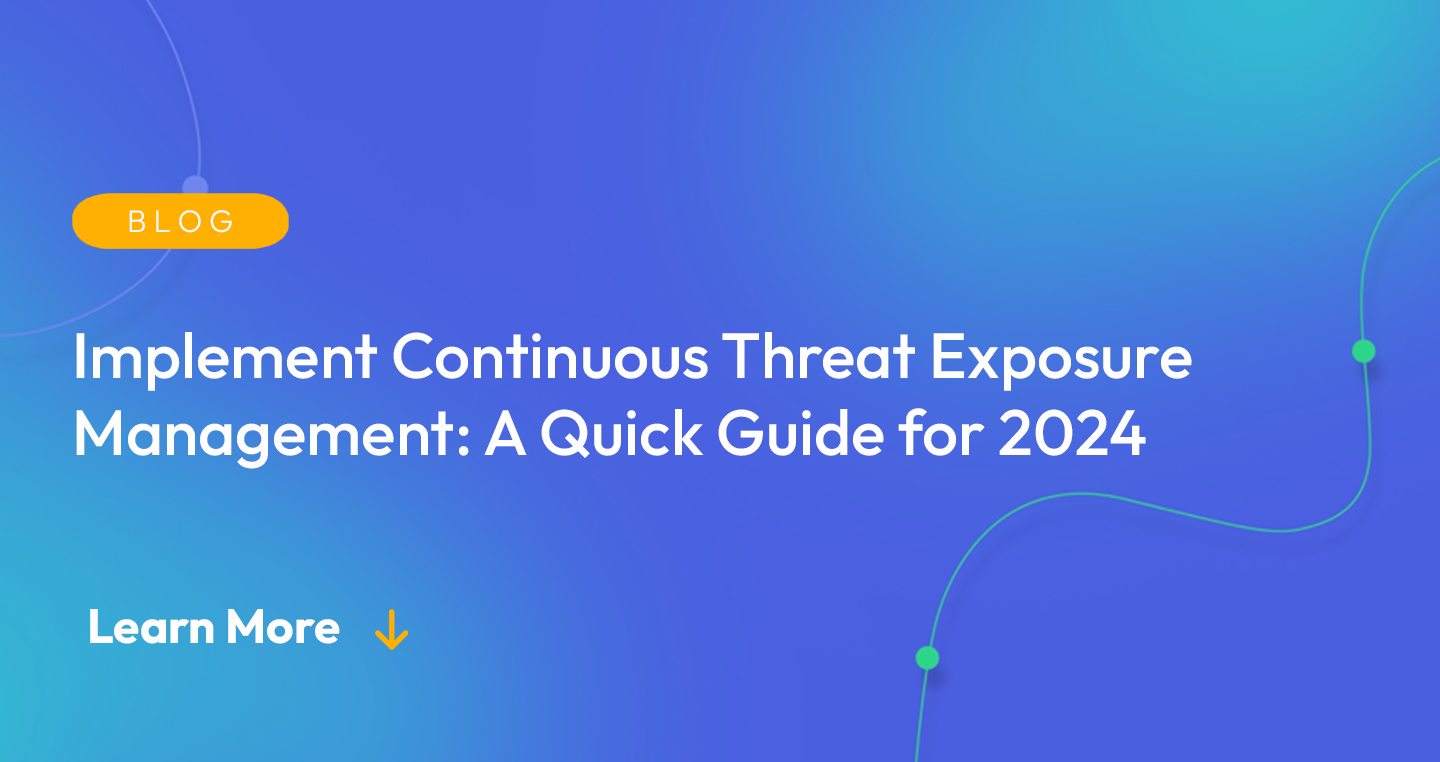
2024-2-8 04:2:31 Author: securityboulevard.com(查看原文) 阅读量:5 收藏

This year, Gartner named “Continuous Threat Exposure Management (CTEM)” as one of the top trends for Optimizing for Resilience. This is a response to increasing attack surfaces and thus cybercrime, and is the approach that best suits the evolving threat landscape.
Organizations’ attack surfaces have exponentially increased over the past few years largely due to the digitization of many aspects of the organization and its supply chain. This leaves organizations susceptible to emerging threats, unless they also adapt their risk management measures.
Gartner predicts:
By 2026, organizations prioritizing their security investments based on a Continuous Threat Exposure Management (CTEM) program will realize a two-thirds reduction in breaches.
This article focuses on the key trend of CTEM, and how incorporating this program would significantly strengthen organizations’ cybersecurity posture.
What is Continuous Threat Exposure Management?
CTEM marks a progressive shift in the realm of cybersecurity, emphasizing the importance of actively detecting and managing threats. It persistently scrutinizes and evaluates an organization’s digital assets to pinpoint weaknesses, gauge risks, and act upon corrective measures. CTEM empowers organizations to maintain a vigilant and steady watch over external threats, thus enabling them to preemptively address these challenges and decrease their overall susceptibility to cyber attacks.
Defining Continuous Threat Exposure Management (CTEM)
CTEM is a proactive, systematic approach to cybersecurity that emphasizes continuous:
- Discovery
- Prioritization
- Validation
- Mobilization
to external threat exposures.
The focus is on understanding and reducing an organization’s cyber risk exposure by constantly and consistently analyzing the changing threat landscape. Then your security team prioritizes remediating identified threats, with the overarching goal being reducing an organization’s risk exposure and improving its security posture.
What is the Purpose of CTEM?
CTEM’s function in cybersecurity is to offer ongoing and thorough understanding of an organization’s threat environment for proactive risk management. This approach is essential in pinpointing vulnerabilities, evaluating their possible consequences, and organizing mitigation activities to reduce both the probability and severity of cyber incidents.
How is CTEM Different from Traditional Threat Management?
Traditional approaches to threat exposure management include:
- Vulnerability management
- Penetration testing, red teaming, and offensive security services
- Asset management
- Cyber threat intelligence (CTI)
- External attack surface management (EASM)
- Digital risk protection (DRP)
It’s important to remember that CTEM is a program, not a solution in and of itself. It requires a strong balance of people, process, and technology to be effective. Flare’s platform focuses on enabling effective CTEM cycles by:
- Leveraging CTI for informed threat analysis
- Using EASM to identify external vulnerabilities
- Incorporating DRP principles to manage digital risks
which contribute to creating a more holistic and adaptive cybersecurity strategy.
Traditional approaches to cybersecurity have often been more reactive than proactive, and analyze security measures through point-in-time reports than continuously monitoring. This is no longer an appropriate response due to the fast-paced nature of the threat landscape. Rapid response is a must as threats evolve and increase.
CTEM exists as a response to the exponentially advancing threat landscape and in an effort to get ahead of threat actors. CTEM provides security teams with a framework to continuously identify, assess, and mitigate threats for a faster and more resilient approach.
Why is CTEM Trending?
Traditionally, security teams narrowed their focus to addressing technology-based vulnerabilities rather than all the ways their organization could be exposed to external risks. Lack of resources and staff severely limit security teams from monitoring and analyzing all relevant threats. CTEM is especially exciting now as an answer to how security teams can most effectively address threats.
Role of Continuous Monitoring in Modern Cybersecurity
Modern cybersecurity has to reflect the modern threat landscape, which is rapidly becoming sophisticated. In addition, with organizations expanding their attack surface, security teams must be careful with not only internal resources adding to risk, but also third-party exposures.
Organizations now realize they cannot count on only “point-in-time” snapshots of their environment or their attack surface because threat actors are quick to capitalize on emerging threat exposures. Security teams that are seeking to modernize their cybersecurity approach have responded to the rapid growth of organizational attack surfaces with processes that address the high volume of external risks.
Next Steps for Organizations Implementing CTEM
As discussed in previous sections, CTEM modernizes organizations and thus security teams’ approaches to risk management. Below are more concrete explanations of what positive changes will come from CTEM implementation.
Benefits of CTEM
The benefits of CTEM include:
- Improved cybersecurity posture: CTEM’s ongoing threat monitoring and evaluating bolster an organization’s defenses against cyber risks.
- Proactive approach to risk management: This approach allows organizations to actively spot and fix weaknesses before they become targets. Getting ahead of threats saves time, money, and other resources.
- Resource optimization: Security teams are already struggling with overstretched responsibilities. The best way to monitor an even greater volume of threats is with CTEM: by prioritizing risks, security teams can tackle the ones of greatest urgency.
- Compliance and regulation alignment: Consistent tracking and handling of cyber threats by CTEM supports adherence to regulatory requirements.
- Accelerated incident response: With real-time information provided by CTEM, organizations can respond to threats more swiftly, minimizing the potential consequences of cyber attacks.
Best Practices for Implementing CTEM
Gartner outlines three key actions for security teams in moving forward with CTEM:
- Align CTEM and business objectives: By identifying and communicating the greatest impact cyber issues for the overall organization, security teams can prioritize the most pressing aspects of CTEM in the context of their business goals.
- Reduce noise through prioritization: Though the CTEM approach involves monitoring a greater volume of threats than with traditional approaches, that does not mean the security team needs to actively respond to each one. By cutting out noise with automated solutions, security teams can react quickly to the highest impact risks.
- Engage the organization holistically: Security teams must mobilize asset owners cross-sectionally and third-parties to implement processes that fit into the CTEM approach for both the short and long-term.
CTEM and Flare
The Flare Threat Exposure Management (TEM) solution empowers organizations to proactively detect, prioritize, and mitigate the types of exposures commonly exploited by threat actors. Our platform automatically and constantly scans the clear & dark web and illicit Telegram channels to discover unknown events, automatically prioritize risks, and deliver actionable intelligence you can use instantly to improve security.
Raffi Kajberouni, President and General Manager at H.E.R.O.S. Inc, states, “Instead of manually scouring the dark web and other sources for hours, I can save up to 500 hours per year and have peace of mind with this Threat Exposure Management solution.”
Flare integrates into your security program in 30 minutes and often replaces several SaaS and open source tools. Learn more by signing up for our free trial.
The post Implement Continuous Threat Exposure Management: A Quick Guide for 2024 appeared first on Flare | Cyber Threat Intel | Digital Risk Protection.
*** This is a Security Bloggers Network syndicated blog from Flare | Cyber Threat Intel | Digital Risk Protection authored by Flare. Read the original post at: https://flare.io/learn/resources/blog/implement-continuous-threat-exposure-management/
如有侵权请联系:admin#unsafe.sh
